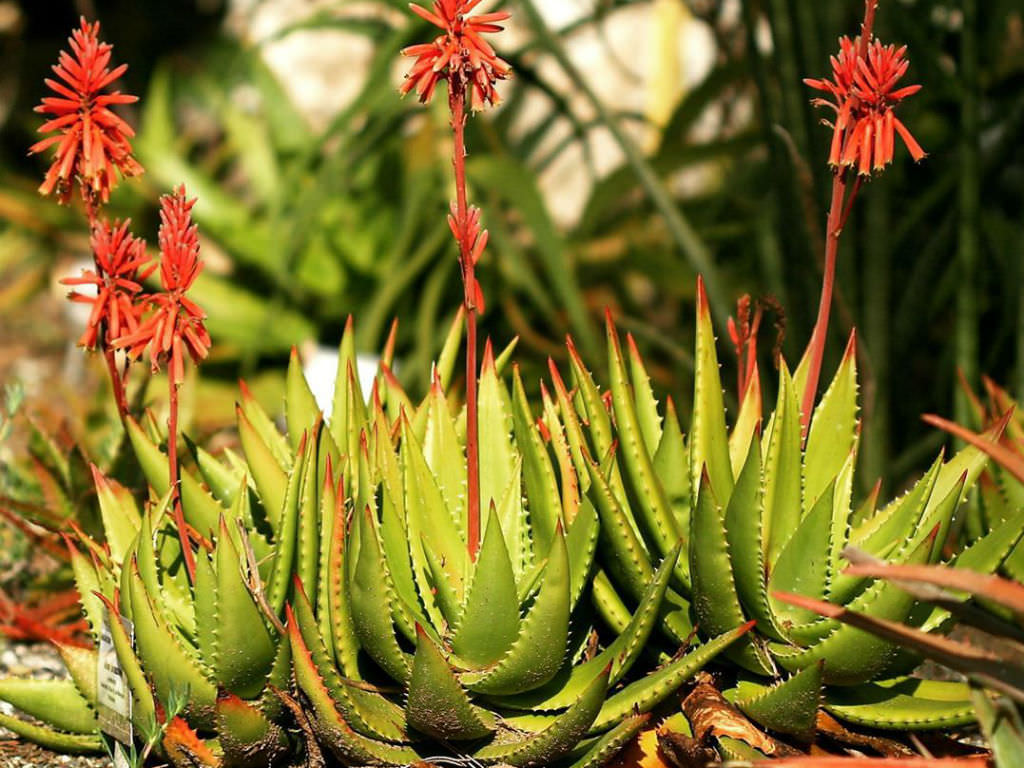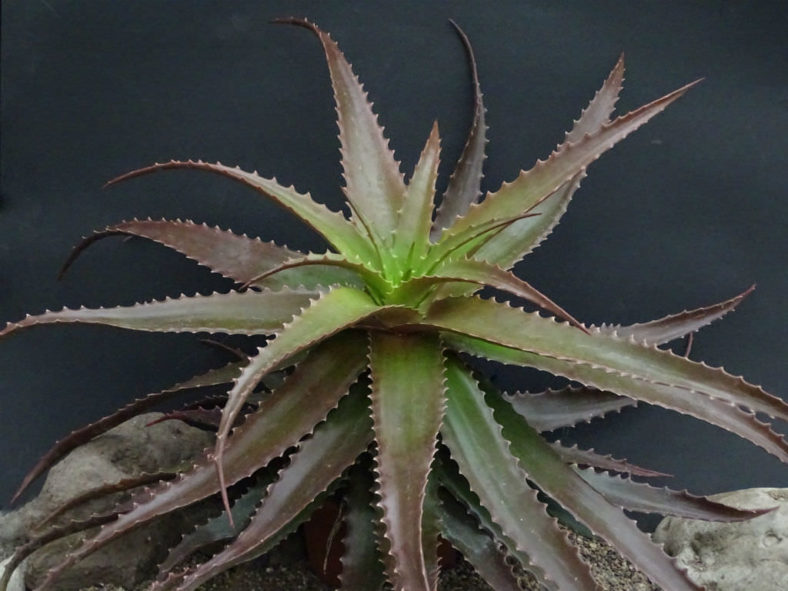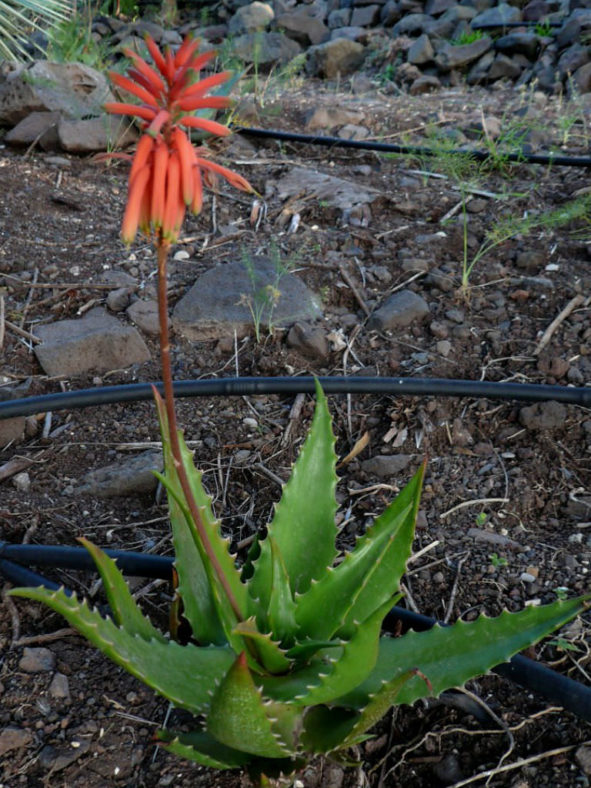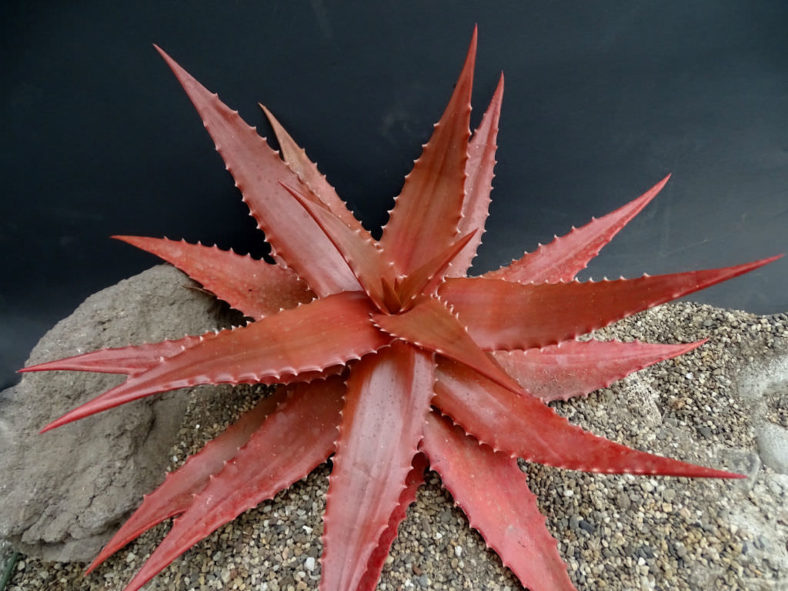Scientific Name
Aloe bussei A.Berger
Synonym(s)
Aloe morogoroensis
Scientific Classification
Family: Asphodelaceae
Subfamily: Asphodeloideae
Genus: Aloe
Etymology
The specific epithet "bussei (BUS-see-eye)" honors Walter Carl Otto Busse (1868–1933), a German botanist and agricultural officer in Tanzania at the beginning of the 20th century.
Origin
Aloe bussei is native to Tanzania. It grows on rocky outcrops and cliffs in the Mpwapwa District.
Description
Aloe bussei is a succulent plant that forms a cluster of attractive, stemless or very short-stemmed rosettes. The leaves are lance-shaped, erect at first, then spreading, and can grow up to 12 inches (30 cm) long and 2.4 inches (6 cm) wide. They are glossy green, turn coppery-red in summer, and have a few white spots on their undersides.
The flowers are tubular, coral red with a yellowish mouth, and appear on slender, usually 1- to 4-branched inflorescences that can reach up to 2.5 feet (75 cm) in height from late summer into fall.

How to Grow and Care for Aloe bussei
Light: When growing Aloes indoors, place your plants in a southern or southwest-facing window with plenty of bright, indirect light. Outdoors provide light shade, especially during the hottest parts of the day.
Soil: Plant Aloes in well-drained soil specially formulated for cacti and other succulents, or make your soil mix. Drainage is essential because too much moisture around roots can cause root rot.
Hardiness: Aloe bussei can withstand temperatures as low as 25 to 50 °F (-3.9 to 10 °C), USDA hardiness zones 9b to 11b.
Watering: These succulents need regular watering but are very tolerant of drought conditions for short periods. Water deeply, but only when the soil is dry. Cut back on watering during the winter months.
Fertilizing: Aloes generally do not require fertilizer but may benefit from the extra nutrients.
Repotting: These plants are not particularly fast-growing and will only rarely need repotting. Repot them in the spring in a container a few inches larger in diameter every few years to keep them from becoming rootbound.
Propagation: Propagating Aloe can be done by offsets, cuttings, or seeds from a mature plant.
Learn more at How to Grow and Care for Aloe.
Toxicity of Aloe bussei
Aloe bussei is not listed as toxic for people and pets.
Links
- Back to genus Aloe
- Succupedia: Browse succulents by Scientific Name, Common Name, Genus, Family, USDA Hardiness Zone, Origin, or cacti by Genus
Photo Gallery
Click on a photo to see a larger version.


